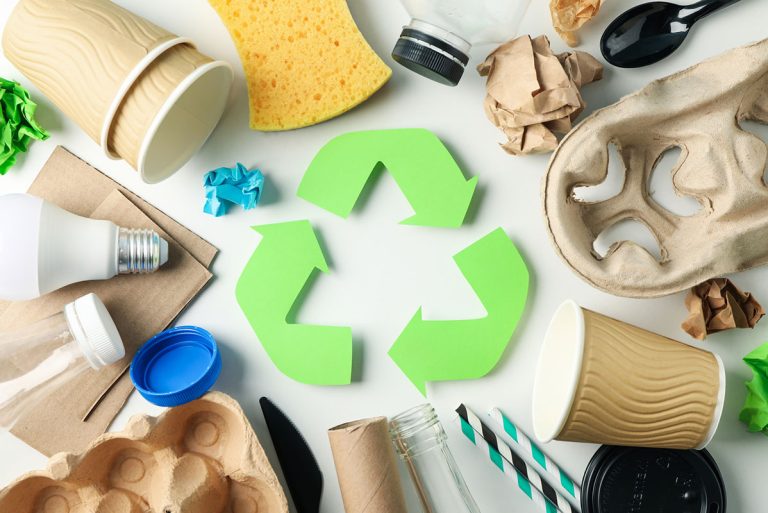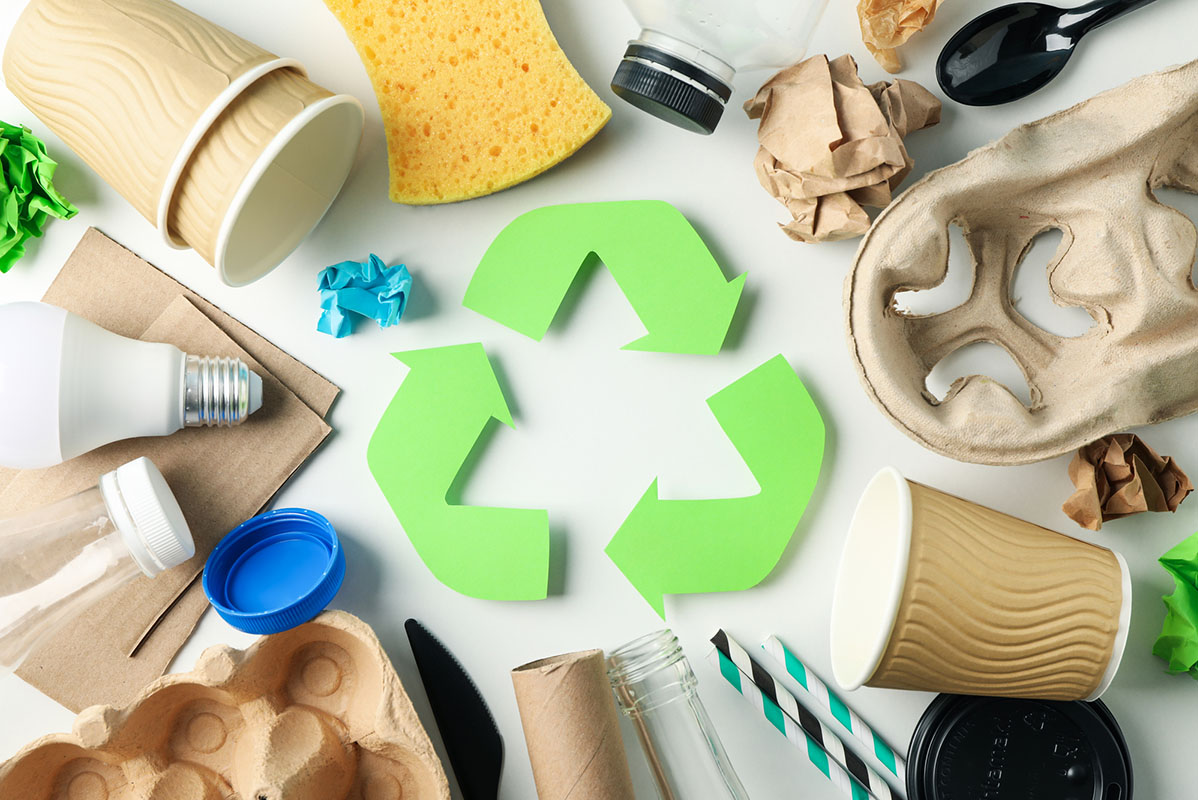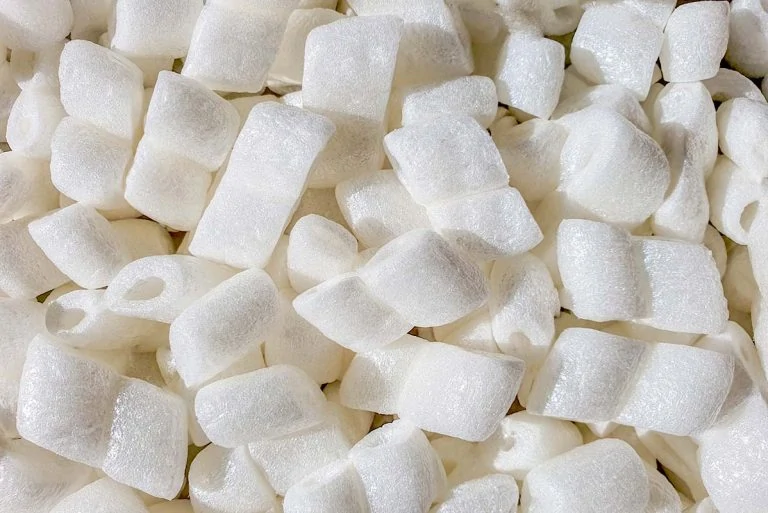If you want to be kinder to the environment and more responsible when it comes to the waste you produce, you should embrace the three Rs (or 3Rs of waste management). The 3Rs of waste management are the basic principles that help to slash the amount of waste you produce, while buying less and conserving the world’s precious resources.
What are the 3Rs of waste management and why are they important?
The 3Rs of waste management, also known as the hierarchy of waste management, are three overarching principles for a better, more environmentally-friendly, and sustainable approach to waste and consumption.
The 3Rs of waste management are:
- Reduce
- Reuse
- Recycle
The planet has a huge waste problem, and it’s growing by the day. Collectively, US households produce 700,000 pounds of trash a day, or 127,000 tons a year, and contribute 33% of the world’s solid waste.
Along with municipal garbage we generate in our homes and business, waste can come from industry, construction, agriculture, street sweeping, and demolition.
Too much trash ends up polluting our natural environment, whether on land, or, too often, in our waterways. Once waste is washed into rivers and streams, it eventually makes its way into the oceans, where non-biodegradable materials like plastic accumulate.
Currently, there is a patch of plastic waste about the size of Alaska in the Pacific Ocean, and another in the North Atlantic spanning hundreds of kilometers. As plastic can take hundreds of years to break down, these patches will only keep getting bigger unless we make drastic changes as a society.

Even if the waste is “properly” disposed of, it ends up in landfill, which is also problematic. As the human population grows, we’re producing ever more waste, and landfills need to expand to accommodate this, taking precious land away from nature.
By adopting the 3Rs of waste management individually, we can collectively:
- Slash the amount of waste we produce as a society
- Better conserve natural resources, habitats, and energy
- Save money on costly waste management
- Reduce air, water, and land pollution
In the next section, we’ll take a closer look at the 3Rs of waste management and how you can embrace them in all aspects of your life.
How to embrace the 3Rs of waste management
The 3Rs of waste management form a continuous cycle: as you take steps to reduce, reuse and recycle, you’ll find new ways to live more sustainably. Here are some easy, actionable steps you can take to reduce, reuse, and recycle as part of your daily life.
1. Reduce
The first R of the 3Rs of waste management stands for reduce. There are a range of ways we can reduce both our consumption and the waste we produce, from buying less to cutting our use of energy and single-use items.
Strive for minimalism
One of the biggest contributors to the world’s waste woes is over-consumption: we’re simply buying too much stuff, most of which we don’t need. By choosing multi-purpose items where possible, and not buying things you don’t need, you’ll slash the waste you produce.

Before buying anything, ask yourself four critical questions:
- What are you intending to use it for? Is it really necessary?
- If so, do you already have something that will serve the same purpose?
- If not, will you use it often enough to justify the purchase?
- If so, is there a multi-purpose alternative that you could buy instead?
By critically assessing all potential purchases through this lens, you’ll be able to avoid buying unnecessary items that you’ll barely use.
Opting for quality over quantity will also go a long way to scale back your consumption and waste. Rather than buying a cheaper product that you’ll need to replace before too long, it’s much better to invest in a high-quality alternative that will last you years.
This will involve a higher up-front investment, but will save you money in the long run!
Reduce your energy consumption
Reducing is not just about the things you buy at the store, but also the amount of energy you consume.
Globally, we rely far too much on fossil fuels for our electricity, fuel, and other forms of energy. Not only are these finite resources that are rapidly running out, but these fuels produce greenhouse gasses that contribute to global warming.

You can do this by:
- Buying energy-efficient appliances such as space heaters and stoves
- Turning off appliances when not in use and lights when you don’t need them
- Using sensor-motion lights
- Using solar lights, solar water pumps, or installing a solar system in your home
- Building an energy-efficient house with the correct positioning, good insulation, and adequate shade
This should also extend to your energy use for transport: instead of driving everywhere, whenever possible carpool with friends, take the bus, cycle, or walk.
Avoid single-use items
Single-use items, from plastic bags to disposable bottles and take-out food containers, are one of the biggest waste culprits. By reducing your use of these items and replacing them with reusable alternatives, you’ll slash the amount of waste you produce.

There are plenty of great alternatives to single-use items, such as:
- Cloth or calico shopping bags instead of plastic grocery bags
- Sealable containers and reusable wraps instead of plastic wrap
- Reusable lunch bags in place of disposable ones
- Reusable keep-cups instead of disposable coffee cups
- You can also kit out your bathroom with zero-waste shampoo, deodorant, and even toilet paper! Check out your local zero-waste store for more inspiration!
Other practical “reduce” actions could include:
- Printing paper on both sides to reduce paper wastage
- Sending documents electronically and storing documentation in the cloud instead of printing it out
- Borrowing or hiring things you use infrequently, such as formal wear, instead of buying them
- Investing in water-efficient appliances such as washing machines and dishwashers
- Avoiding buying items with excess packaging, and opting for zero-waste packaging such as paper or glass jars wherever possible
- Buying in bulk to reduce the amount of packaging overall
2. Reuse
The second R in the 3Rs of waste management is reuse. This concept is all about reusing an item again, for the same or another purpose, as well as passing on things to others instead of throwing them away.
No matter how much we reduce our consumption, we will inevitably still produce some waste. Reusing whatever we can rather than throwing it away serves two important purposes for sustainability.
Firstly, reusing as much as we can avoids having to buy new products, and so reduces the environmental impact. Additionally, reusing items that are difficult or impossible to recycle means that they don’t end up in landfill, or choking our land or waterways.
Upcycle unwanted items
Too often we throw away things that could be turned into something practical or beautiful with a little bit of imagination. There are countless ways to repurpose and upcycle common household waste, from something as simple as turning an old pots and pans into storage containers, to complex crafts projects using would-be trash as a raw material.

Here are just a few examples:
- Turn old furniture into garden planters like these
- Make a cool bathroom organizer from old pieces of wood
- Create cute coasters from old wine corks
- Make a funky flower vase from old pens or markers
- Turn old shoes into a unique hanging jewelry rack
Set up a compost bin
Composting is another form of reuse: this reuses organic waste and turns it into fertile soil. It’s also an excellent way to avoid sending loads of trash, from food scraps to teabags and paper, to landfill.

Although organic waste is biodegradable, when it’s mixed in with inorganic waste like plastic, when it breaks down it just adds to the mass clogging up landfills. However, by composting, you can return this organic matter to the earth and use it to grow a beautiful garden.
Want to learn more about composting? Read more here, or learn how to set up a compost bin in an apartment here.
Donate unwanted items
Reusing doesn’t necessarily mean you have to reuse something yourself – you can also give it to someone in need. Donating your unwanted stuff is a fantastic way to responsibly manage your waste while helping someone else.

Source: Wikimedia / AlbertHerring
This could be donating old books to public libraries, giving household goods to a family friend who’s setting up house, dropping unwanted clothing to a Goodwill store, or giving old toys to a local organization such as a domestic violence shelter. If you have something that you don’t want or need any more but is still in good condition, someone will be happy to give it a new home!
Other practical “reuse” actions could include:
- Using old cans to store kitchen items, or as organizers for stationery or computer wires
- Turning an old tire into a swing or to edge your garden beds
- Using old wood for crafts or as firewood
- Taking advantage of innovative solutions, such as modular construction of office buildings and homes out of discarded shipping containers
- Making use of old newspapers to wrap gifts or your breakables when moving
- Buying rechargeable batteries
- Repairing damaged clothing, accessories, or household goods instead of replacing them
- Buying second-hand products or picking them up on Freecyle
3. Recycling
The third R in the waste hierarchy stands for recycle: whatever waste cannot be reused should be recycled. This is a process that transforms waste into raw materials that can be used to make new products.
Like reusing, recycling reduces the amount of resources that need to be extracted to make new products, by feeding precious materials back to the manufacturing industry. This avoids the need to extract more raw materials, as well as the energy use and waste generated through this process.
Recycle all possible waste
To fully embrace the third R of the waste management hierarchy, you need to recycle all possible materials, not just the common ones. This means not only making full use of your local area’s curbside recycling program, but also taking this approach for items that aren’t as easy to recycle.
Many recycling centers will take a range of materials that you can’t recycle curbside, from metal and wood to markers and razor blades. You can search for a facility in your area online using tools like Earth 911: just put in the type of material you want to recycle and your zip code to find a suitable center near you!

For really difficult-to-recycle items like shoes and silicone, there are mailing programs which will take them off your hands, though these usually involve a fee.
An important aspect of recycling is knowing how to properly prepare different materials for recycling. By adding something to your recycling that has not been properly prepped and cleaned, or doesn’t belong there at all, you can contaminate the entire load, meaning not only yours, but also all of your neighbors’ otherwise-recyclable items end up in landfill.
Buy recycled or recyclable products
Another big part of recycling is buying products that are easily-recyclable, made of recycled materials, or preferably both. Choosing products from recycled materials means that your purchase could reduce the amount of problematic waste in the world, even a little.

Source: Flickr / John Lambert Pearso
There are some fantastic products made from recycled materials, such as swimwear made from recycled plastic bottles and ocean waste.
Equally, by buying items that are easy to recycle, you reduce the amount of waste you ultimately produce. For example, you can opt for beverages that come in glass bottles instead of plastic ones.
Other practical “recycle” actions could include:
- Buying non-toxic products whenever possible
- Using recycled paper for printing or crafts
- Recycling gray water from your kitchen, bathroom, and laundry and using it to water your garden
- Educate others on how to recycle properly and promote recycling to your family and friends
- Set up a recycling system at your school or workplace
Beyond the 3Rs of waste management
Practicing the 3Rs of waste management can go a long way to combat the ever increasing environmental, health and economic issues caused by mounting waste and pollution.
Some argue that we could add three more Rs as we develop even more effective and innovative ways to manage waste:
- Recovery: This involves finding useful solutions for waste that cannot be reduced, reused, or recycled. Recovery can include reprocessing waste into fuel or, if necessary, landfill that is managed as responsibly as possible.
- Rot: This is any kind of process that turns organic waste into natural fertilizer including, but not limited to, composting.
- Reject, rethink, or redesign: This movement seeks to promote zero-waste through banning single-use items entirely: the argument says that you should reject single-use products, rethink the things you use, and redesign the products we use.
Whether you embrace the three Rs, or add in a couple more, every step you take to responsibly manage your waste can go a long way to protect the environment.
To learn more about eco-friendly waste management, take a look at our guides to responsibly disposing of propane tanks, kitchen knives and furniture.












